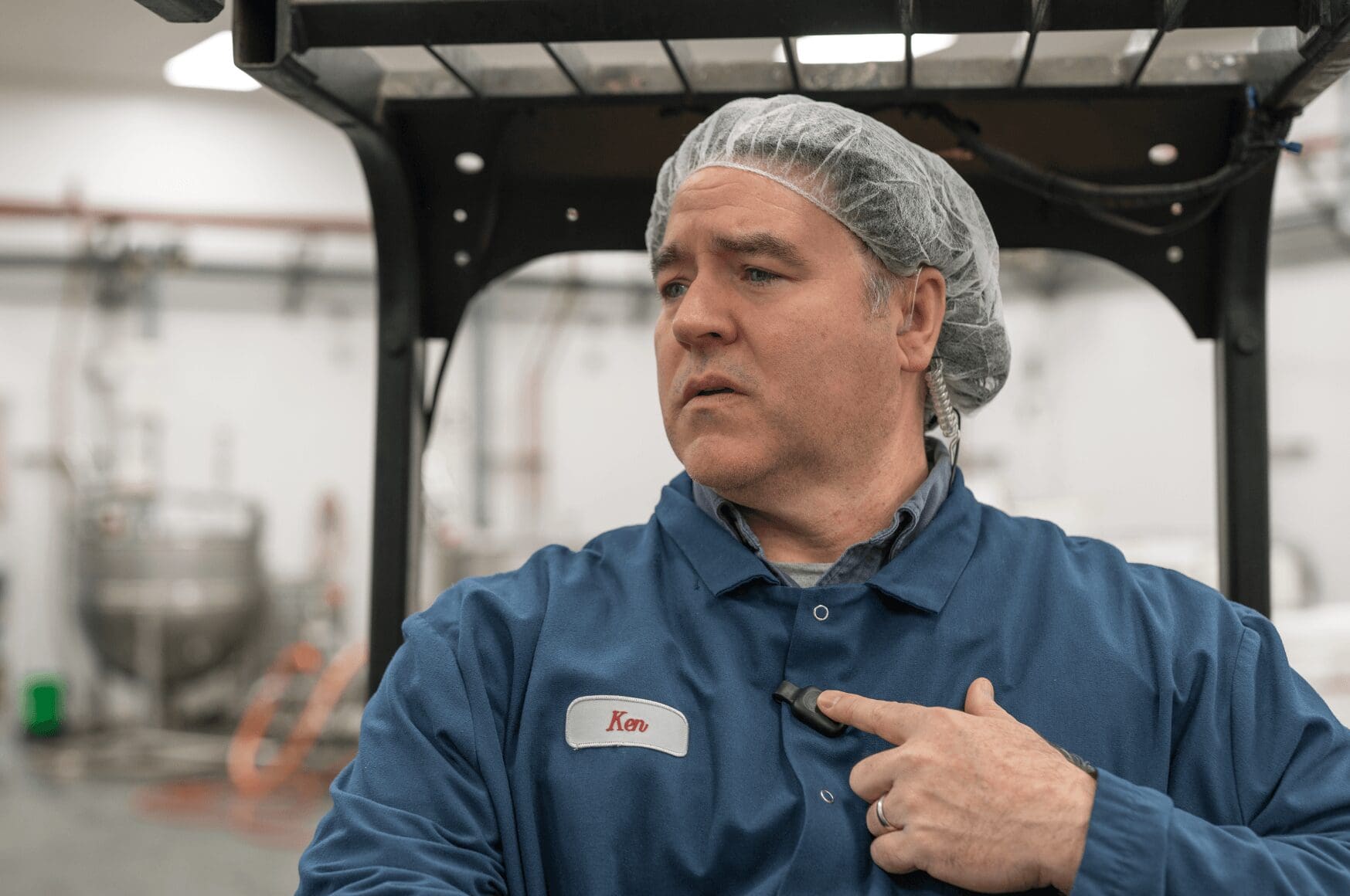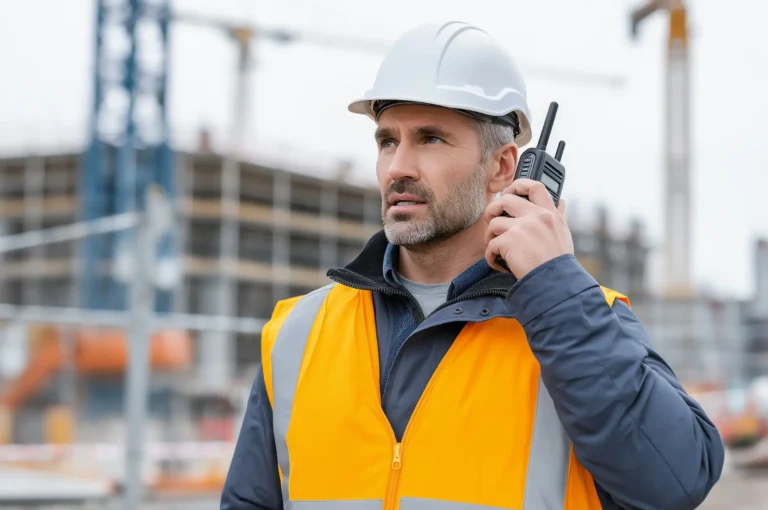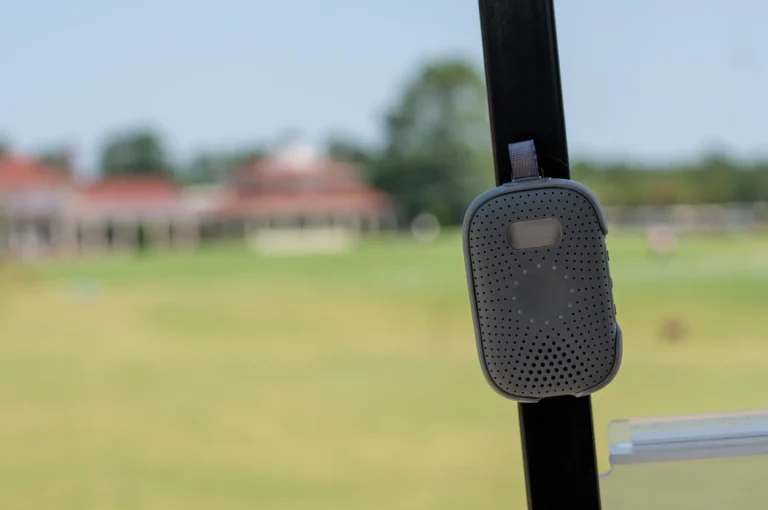Warehouses aren’t short of safety hazards – with machinery, production lines, transportation, loading docks, heavy goods, quiet corners, lone working, and tall storage solutions all claiming their own risks.
Better warehouse safety can prevent accidents, boost productivity, and maximize compliance (preventing costly fines). The question is, how do you improve warehouse safety in the best, most tangible way?
In this article, we’ll share best-practice tips for increasing warehouse safety, and what to look for in a warehouse radio to improve safety, efficiency, and productivity.
Tips for Increasing Warehouse Safety
Warehouses are critical working environments. Speed, precision, and teamwork are paramount to streamlining operations and maximizing productivity.
Incorporating safety into these fast-paced environments is crucial (with the second-highest fatality rate of all US sectors), but it isn’t always easy.
Top tips to increase warehouse safety include:
1. Facilitate clear, critical communication
Warehouse safety is rooted in strong, efficient team communication. Without it, people, teams, processes, and even customers can suffer.
One of the best ways to ensure good communication in a workplace is to deploy a secure, reliable communication device (i.e., a walkie-talkie or radio).
Good communication in warehouses can result in:
- Safer and engaged staff: Research finds “disengaged” staff are involved in 64% more workplace accidents compared to “engaged” workers.
- Helps build cohesion and team morale: Safety is everyone’s responsibility, and better communication can lead to better teamwork and a sense of shared ownership over safety practices.
- Increased productivity: A 2017 study found that staff who feel safer at work are more productive and put more effort into their jobs.
- Better compliance: OSHA communication standards for warehouses have financial penalties for non-compliance. Clear procedures and workflows support compliance during inspections and routine business operations.

2. Minimize “deadzones”
Lone workers face the same risks as group-working employees, but research shows that working alone increases the likelihood of an accident and the severity of the outcome.
Communication deadzones (areas with no signal) can be a real problem in a warehouse. For example, areas with bad or no signal can include outdoor areas, behind tall shelving units, quiet corners, or inside small storage rooms.
For lone workers, this creates a potential safety hazard. If an incident happens, getting fast help can reduce the likelihood of a serious injury. A dead zone can prevent workers from getting the help they need quickly – if at all.
To improve warehouse safety, a communication system with triple-redundancy (like Relay’s smart radios) minimizes deadzones. By intelligently transitioning between Wi-Fi and cellular networks, it maximizes connectivity and reduces downtime.
3. Be emergency-ready
In 2023, 11.7 per 100,000 deaths in the US warehousing and transportation sector were deemed “preventable”. Ensuring your warehouse is emergency-ready can help reduce the likelihood of preventable workplace deaths and injuries.
Ways to be emergency-ready include:
- Using digital solutions to establish clear communication lines in emergencies, e.g., through localized messaging, team alerts, and company-wide alarms to ensure messages reach the right people at the right time, without causing unnecessary panic
- Running emergency drills (read how to manage emergency evacuations using radios)
- Deploying signage to display emergency protocols
- Delivering bite-sized training on critical situation procedures
Check out Relay’s Guide to Emergency Preparedness here.
4. Develop (and implement) proper safety protocols
Warehouses must develop sufficient safety protocols to protect staff against hazards and comply with regulations. These safety protocols must be suitable for use in practice and contain clear, actionable practices that can be easily adhered to.
Some examples of how safety protocols can be implemented include:
- Leveraging digital tools to track preventative maintenance, issue reminders, facilitate communication, and manage critical alerts
- Conducting pre-use inspections on machinery or production line equipment as a standard, daily practice, or during handovers
- Running routine safety briefings on risks, hazards, and procedures
- Facilitating good communication to create team cohesion and a shared ownership of risks
- Practicing good organization and housekeeping through specific, actionable, and clearly assigned clean-up tasks
5. Create space for anonymous reporting
Stats report that 85-98% of accidents are caused by the unsafe acts of employees, and that unsafe acts cause four times as many accidents and injuries as unsafe conditions.
Supervisors don’t have eyes and ears everywhere – but employees do. Not everyone is willing to speak up if they see poor practice, especially if the person is more senior than them.
Creating an anonymous tip line allows staff to report poor practice when they see it, without worrying about negative repercussions from their colleagues or managers.
Digital forms can be a good tool, along with a good old-fashioned post-box situated in a relatively remote location (like outside the toilets or away from any interior security cameras).
6. Address language barriers
One in four safety incidents in the workplace are linked to language barriers. In multi-lingual teams, miscommunication can cause delays, safety risks, and costly inefficiencies (we’ve found that language barriers drain $500,000 from businesses each year).
Advances in business technology (like Relay’s TeamTranslate™) can prevent communication breakdowns and minimize safety risks caused by misunderstandings.

What to Look For in a Warehouse Radio to Promote Safety
A two-way radio can facilitate workplace safety, but it’s important to choose the right radio for a warehouse. Warehouses are known for efficiency, structured workflows, and fast-paced working procedures, so a radio must cater to very specific needs for a business to realize benefits.
Here are the key features to look for in a warehouse radio:
- Instant alerts: Every second matters in an emergency. Relay works faster than other radios in the industry, ensuring your alerts are delivered in less than one second, with no delays.
- Clear, crisp two-way communication: A radio should minimize misunderstandings through clear radio signals in any location.
- Triple-redundancy coverage: Deadzones in remote locations or quiet warehouse corners can pose safety risks. Radios with triple redundancy ensure continuous connectivity.
- Targeted messaging: Sending alerts to everyone can cause confusion. Devices with tailored workflows ensure messaging only reaches those who need it.
- Lone worker/man-down alarms: A complete panic alert system promotes safety in the workplace, helping staff report a dangerous malfunction, fires, health concerns, or a personal accident.
- Loud vs vibrate alarms: Not all alarms need volume. Sounding alerts can cause unnecessary chaos. Choose a device with the option for loud and vibration alarms to prevent distractions and panic.
- Real-time language translation: Miscommunication can cause accidents. Avoid misunderstandings with a live language translator built into your warehouse radio.

- Live location tracking: Enabling leaders to precisely track employee locations indoors and outdoors through location beacons.
- Legislative compliance: Radios that meet legislative requirements in multiple regions guarantee satisfaction with legal mandates.
- Customization and workflow management: Devices with a cloud-based dashboard enable administrators to adapt workflows to maximize safety and efficiency easily.
- Durability: A radio must be strong enough to withstand drops and falls in a warehouse. Relay is MIL-STD 810H certified (meaning it can withstand shock, vibration, and extreme temperatures) and IP-68 certified (for water and dust resistance). Learn more about Relay’s Class 1 Division 2 Certified devices.
Read our ultimate guide on choosing the best radio for a warehouse.
Replace Your Two-Way Radios With Relay
Bridging the gaps between people and processes, Relay is a communications device built for the future.
Our radios offer durability, reliable connectivity, and customizable workflows to maximize safety, efficiency, and productivity in a warehouse environment.
Watch our on-demand videos to discover how Relay radios work for warehouses, or book a live demo with our expert team today for a tailored chat about your specific business needs.
Ready to get started? Explore pricing to find the best solution for you.







